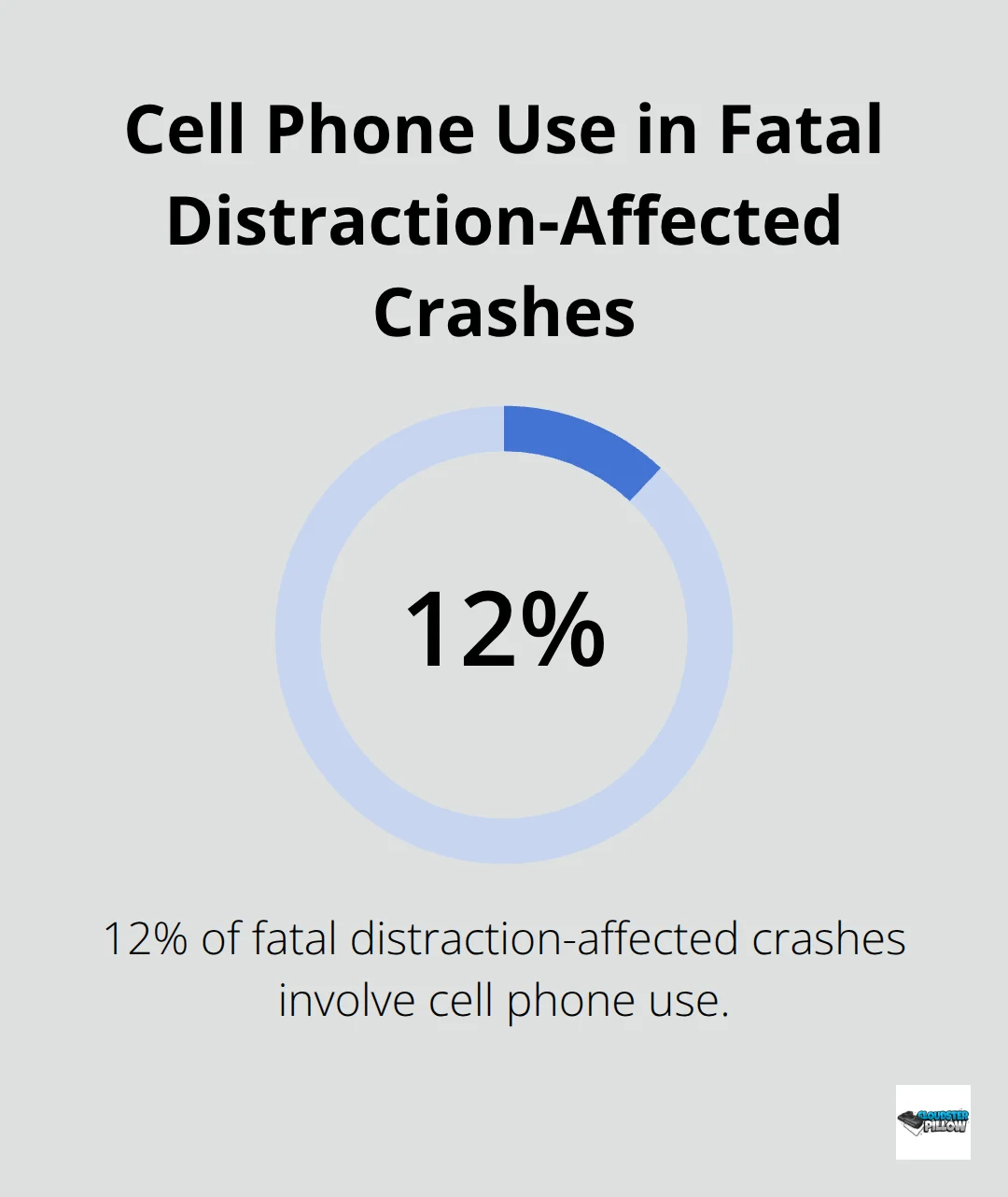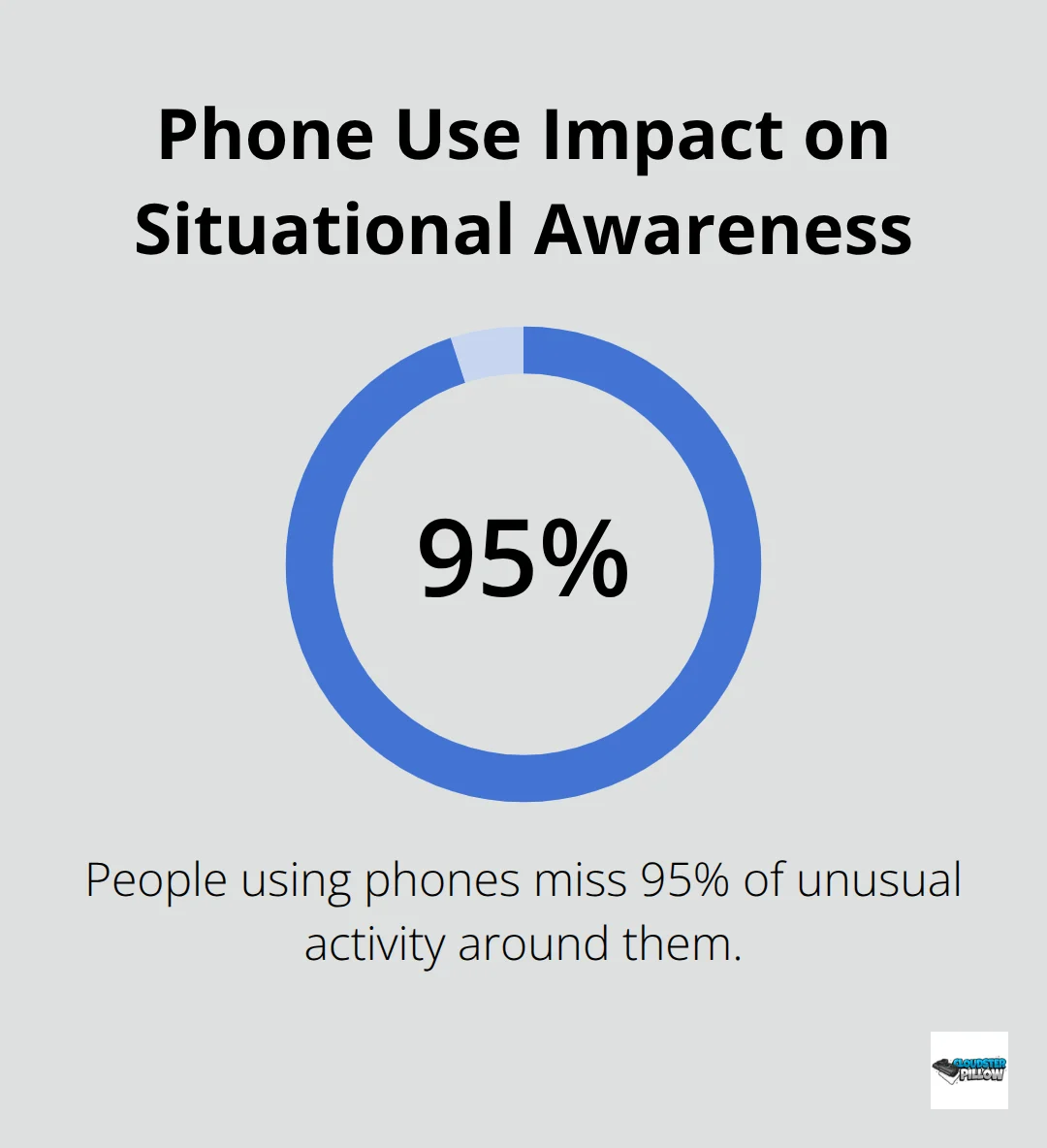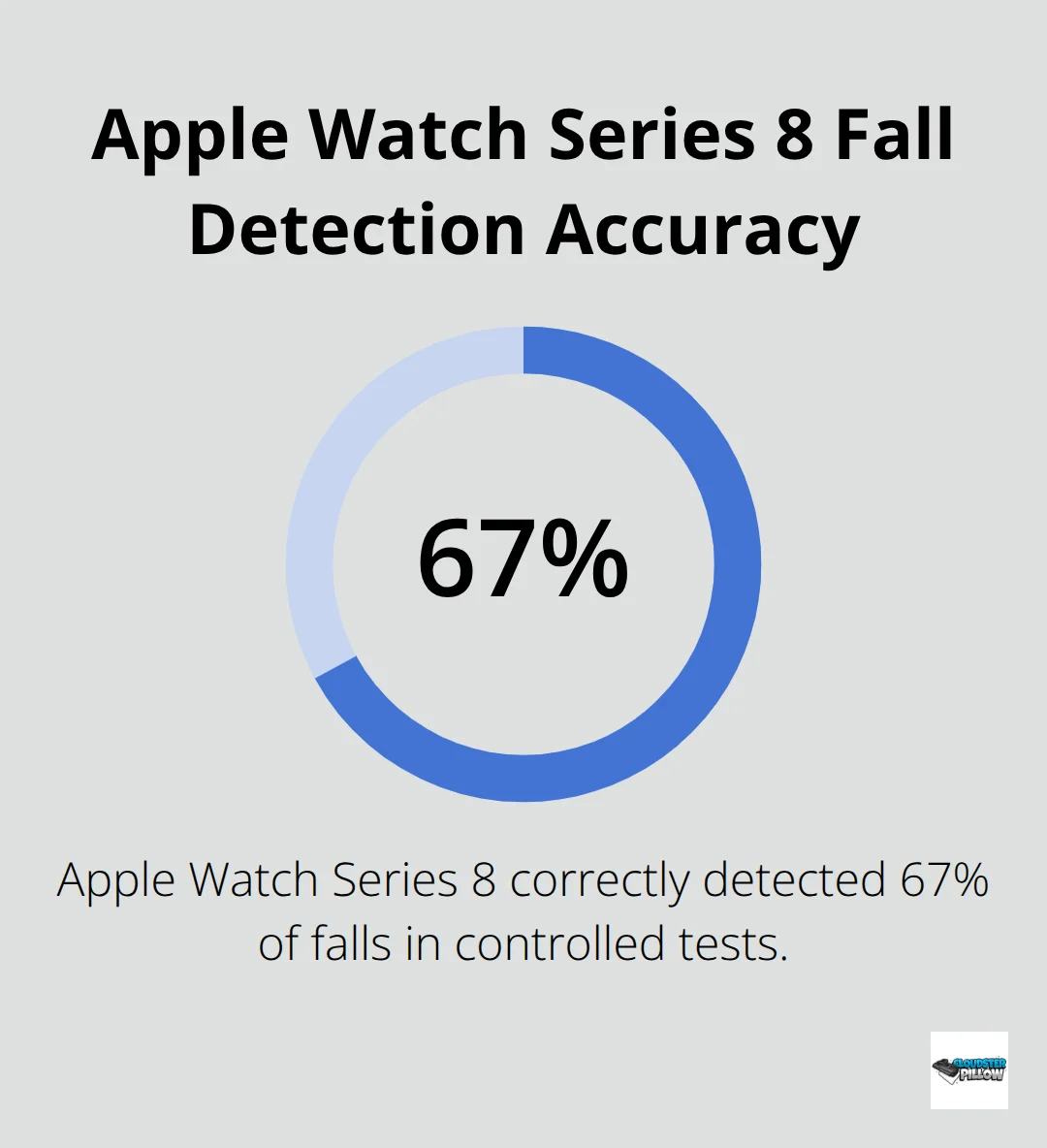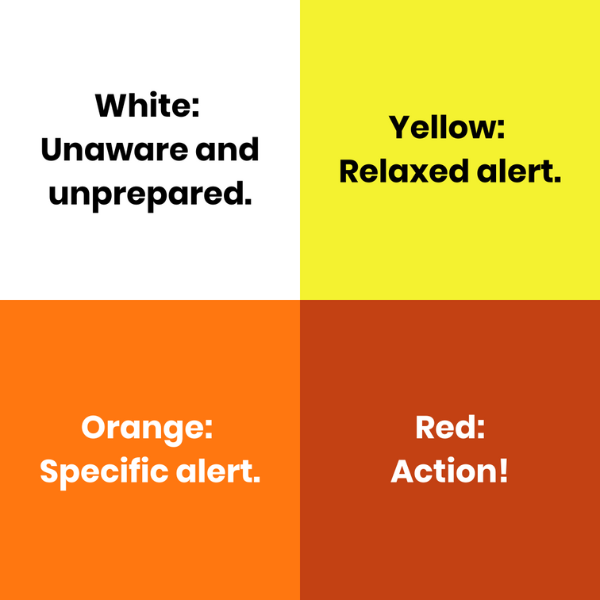CCW Training, CCW Courses and Tips
How to Improve Your Situational Awareness for Everyday Safety
Most people walk through life unaware of potential threats around them. This lack of awareness puts you at unnecessary risk every single day.
We at Cloudster Pillow believe learning how to improve situational awareness is one of the most valuable skills you can develop. The techniques in this guide will help you stay safer whether you’re carrying concealed or simply going about your daily routine.
What Is Situational Awareness and Why Does It Matter
Situational awareness means you know what happens around you, understand what those events mean, and predict what might happen next. Situational awareness is defined as the perception of the elements in the environment considering time and space, the understanding of their meaning, and the prediction of future status. This skill has three levels: perception of your surroundings, comprehension of their meaning, and projection of future status. Most people operate at level one and simply notice things without understanding their significance.
The Three Critical Components That Keep You Safe
Your brain processes thousands of environmental cues every second, but most people filter out 99% of this information. Effective situational awareness requires you to actively engage all three levels. Level one involves scans for anomalies in your environment. Level two means you interpret what those anomalies could indicate. Level three projects potential outcomes and prepares your response.
The U.S. Department of Homeland Security recommends you conduct a 30-second assessment when you enter new areas. This quick scan identifies exits, potential threats, and safe zones. Your smartphone destroys this process completely. The National Safety Council reports that 12% of fatal distraction-affected crashes involve cell phone use.

How the OODA Loop Transforms Your Response Time
The OODA loop, developed by U.S. Air Force Colonel John Boyd, gives you a systematic approach to threat assessment. Observe your environment continuously. Orient yourself when you process what you see and hear. Decide on your course of action. Act with confidence and speed. This cycle should run continuously in your mind.
Most people skip the orient phase and jump straight from observation to action (which leads to poor decisions). The Force Science Institute found that training in realistic scenarios improves use-of-force skills significantly. Practice this loop during normal daily activities. At the grocery store, observe other shoppers, orient when you assess their behavior patterns, decide if anything seems unusual, and act when you position yourself accordingly.
Common Mistakes That Compromise Your Safety
People make predictable errors that destroy their awareness. Tunnel vision occurs when you focus too intensely on one thing and miss everything else around you. Assumption bias makes you dismiss unusual behavior because it doesn’t fit your expectations. Normalcy bias convinces you that nothing bad will happen because it hasn’t happened before.
These mistakes compound when you feel comfortable in familiar environments. Your guard drops at your regular coffee shop or neighborhood grocery store, but criminals often target these predictable locations. Situational awareness training helps you develop these skills systematically. The next chapter will show you specific techniques to build these awareness skills into automatic habits.
How Do You Build Situational Awareness Skills
Master the baseline method first. Spend 15 minutes in a public space and observe normal behavior patterns. Watch how people walk, where they look, their body language, and interaction styles. Jeff Cooper’s Color Code system provides you with a framework for threat assessment that works. Condition White means you remain completely unaware and vulnerable. Condition Yellow keeps you in relaxed alertness during daily activities. Condition Orange indicates you have identified a potential threat and evaluate it. Condition Red means you stand ready to act on an immediate threat. Most people should stay in Condition Yellow throughout their day.
Environmental Scanning Techniques That Work
Use the three-up-three-down method when you walk. Look at three people ahead of you and three behind you every 30 seconds. This prevents tunnel vision and maintains peripheral awareness. Practice the What If Game in every new location. Identify two exits, potential cover, and areas where threats could emerge. Mental preparation through scenario planning helps reduce reaction times during actual emergencies.
Scan in layers that start close to you and work outward. Check your immediate space first, then expand to 25 feet, then 50 feet. Your smartphone kills this process instantly. People who use phones miss 95% of unusual activity around them (according to Western Washington University studies).

Reading Body Language and Behavioral Cues
Baseline behavior varies by location, but certain indicators remain consistent. Hands in pockets, excessive sweating, avoided eye contact, and repeated exit checks signal potential problems. Watch for clothes that don’t match weather conditions or bulges that suggest concealed items. Pre-attack indicators include clenched fists, target glances, and positions that create advantage.
Trust your instincts when something feels wrong. Your subconscious processes more information than your conscious mind and often detects threats before you can articulate why. The Department of Homeland Security reports that 78% of prevented incidents started with someone who noticed unusual behavior and acted on that observation.
Practice Drills for Daily Improvement
Start with the 30-second assessment drill. When you enter any new space, take half a minute to identify exits, potential threats, and safe zones. Count the number of people present and note their general behavior patterns. This becomes automatic with consistent practice.
The peripheral vision exercise strengthens your awareness without obvious head movements. Focus on a fixed point ahead while you consciously register movement and activity in your side vision. Practice this technique while you wait in lines or sit in restaurants. Regular training and scenario-based exercises can enhance these natural abilities, but they work best when they support rather than replace your developed awareness skills.
Which Technology Tools Actually Improve Your Safety
Most safety apps promise miracles but deliver disappointment. The reality is harsh: technology can enhance your situational awareness, but it cannot replace the fundamental skills you learned in the previous chapter.
Smartphone Apps That Provide Real Value
Your smartphone already contains the most effective safety tools available. The Citizen app provides real-time crime alerts within a 1-mile radius of your location and gives you specific information about incidents as they happen. Emergency SOS features on both iPhone and Android can contact authorities and share your location with trusted contacts through simple button combinations.
Life360 allows family members to track each other’s locations and receive automatic crash detection alerts. This works best for families who agree to share location data. Most other safety apps drain your battery without providing meaningful protection.
Personal Safety Devices That Actually Work
Panic buttons and personal alarms create noise but rarely bring help in urban environments where people ignore car alarms and sirens. Smartwatches with fall detection provide genuine value for medical emergencies, but their safety features often fail when you need them most.
The Apple Watch Series 8 correctly detected falls in only 67% of controlled tests (according to Consumer Reports testing). GPS trackers work well for vehicle theft recovery but offer limited personal protection value. Pepper spray remains more effective than any electronic device for personal defense, though proper training is essential for effective use.

Home Security Technology Worth Your Investment
Ring doorbells and similar video systems excel at package theft deterrence but miss 23% of motion events according to independent testing by Which magazine. SimpliSafe and ADT systems provide reliable monitoring, but response times average 8-12 minutes in most urban areas.
Smart locks offer convenience but create new vulnerabilities through Wi-Fi network attacks. Motion-activated lights and basic alarm systems deter most opportunistic criminals more effectively than expensive smart home setups.
Low-Tech Solutions That Outperform High-Tech Gadgets
The most effective home security combines multiple low-tech solutions: solid doors, quality deadbolts, window security film, and strategic light placement that eliminates hiding spots around your property. These simple measures stop more break-ins than complex smart home systems.
Your best defense remains the awareness skills you develop through practice, not the gadgets you buy online. For situations requiring additional protection, consider non-lethal defense tools that complement your awareness training.
Final Thoughts
Situational awareness transforms your daily safety from passive hope to active protection. The techniques we covered work because they build on your natural abilities rather than replace them with gadgets that fail when you need them most. Start with the baseline method tomorrow and spend 15 minutes observing normal behavior patterns in any public space.
Practice the Cooper Color Code system and maintain Condition Yellow throughout your day. Use the three-up-three-down technique every time you walk somewhere new. These skills become automatic within 30 days of consistent practice (your brain will start processing environmental cues without conscious effort).
For concealed carriers, enhanced awareness pairs perfectly with comfortable carry solutions. The Cloudster Pillow reduces pressure points and heat while improving firearm concealment, making extended carry more practical during your daily awareness practice. Your safety depends on the habits you build today, not the emergency response you hope to remember tomorrow.

